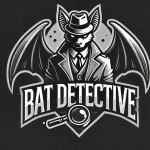Bats have long captured the imagination of people across the world, inspiring a mix of awe, fear, and curiosity. These nocturnal mammals, the only ones capable of true flight, play vital ecological roles, yet their mysterious habits have also made them central to myths, folklore, and cultural traditions.
The Biology and Behavior of Bats
With over 1,400 species, bats represent one of the most diverse groups of mammals. They inhabit nearly every corner of the globe, from tropical rainforests to urban areas, and exhibit an incredible range of diets, including insects, fruits, nectar, and even small animals. Their ability to navigate in darkness using echolocation—a biological sonar system—is a marvel of evolution that has intrigued scientists for centuries.
Despite their ecological importance, bats’ nocturnal habits and association with darkness have made them symbols of mystery and the supernatural.
Bats in Folklore and Myth
Throughout history, bats have been woven into cultural narratives, often taking on symbolic meanings that reflect the values and fears of different societies.
1. European Traditions: Symbols of Fear and the Supernatural
In European folklore, bats have frequently been linked to darkness, witches, and vampires. This association is largely due to their nocturnal nature and silent flight, which people once found unsettling. The connection between bats and vampires was solidified by Bram Stoker’s 1897 novel Dracula, in which the titular vampire could transform into a bat. This imagery remains a staple in modern horror genres.
2. Chinese Culture: Symbols of Luck and Prosperity
In contrast to European traditions, bats are symbols of good fortune in Chinese culture. The Chinese word for bat, “fu,” sounds like the word for “blessing” or “happiness.” Artistic depictions of bats are often found in traditional Chinese designs, representing prosperity, longevity, and happiness.
3. Native American Beliefs: Guardians and Tricksters
For some Native American tribes, bats are viewed as symbols of intuition and rebirth due to their ability to navigate in the dark. Other tribes see them as tricksters or mediators between worlds, reflecting their unique and mysterious behavior.
4. Mesoamerican Mythology: Bats as Guides to the Underworld
In Mayan mythology, bats were associated with death and the underworld. Camazotz, a bat god, was believed to guard the entrance to Xibalba, the Mayan underworld. This figure was both feared and revered, symbolizing the duality of life and death.
Bats in Modern Science and Conservation
Today, bats are recognized not just as cultural symbols but as essential contributors to ecosystems. They play critical roles as pollinators, seed dispersers, and pest controllers. For example, a single bat can consume thousands of insects in a night, helping to control agricultural pests and reduce the need for pesticides.
Despite their importance, bats face significant threats from habitat loss, climate change, and diseases like white-nose syndrome. Conservation efforts have become increasingly urgent to protect these fascinating creatures and the ecosystems they support.
Conclusion
From ancient myths to modern conservation, bats have held a unique place in human culture and science. Their mysterious nature has made them both revered and misunderstood, but as our knowledge grows, so does our appreciation for their ecological and cultural significance. By protecting bats, we safeguard not just an essential part of our ecosystems but also a creature that has inspired countless stories and traditions across history.
Relevant Science Link:
For more information on the role of bats in ecosystems and their conservation, visit Bat Conservation International: https://www.batcon.org
